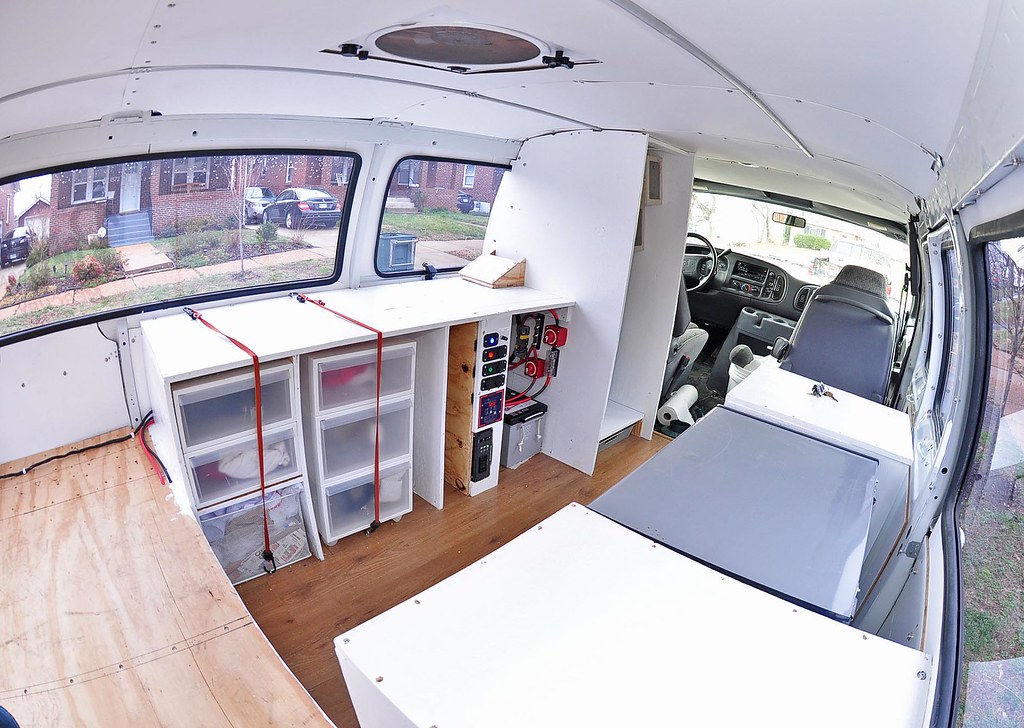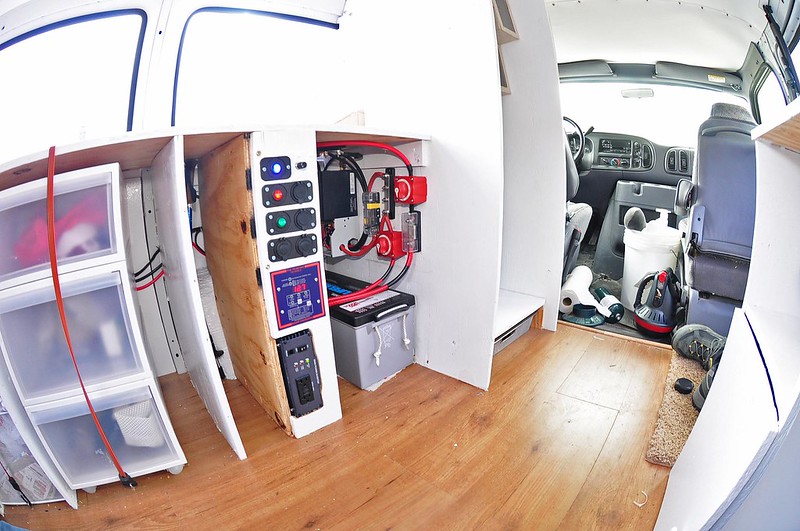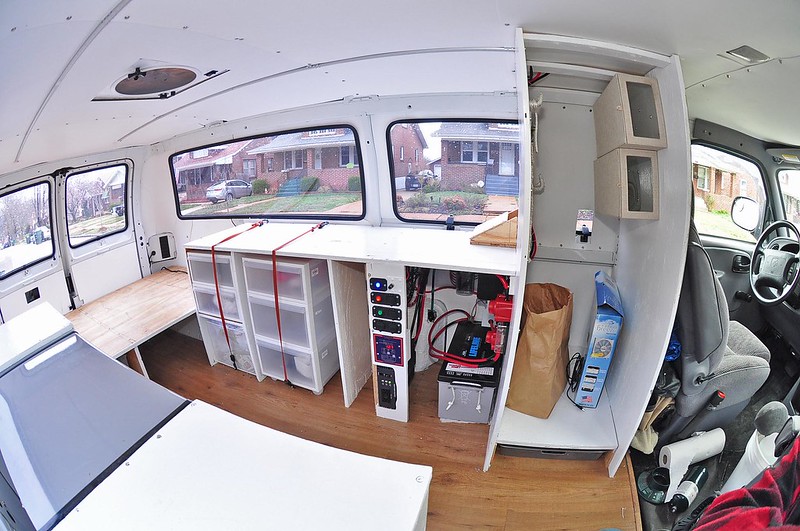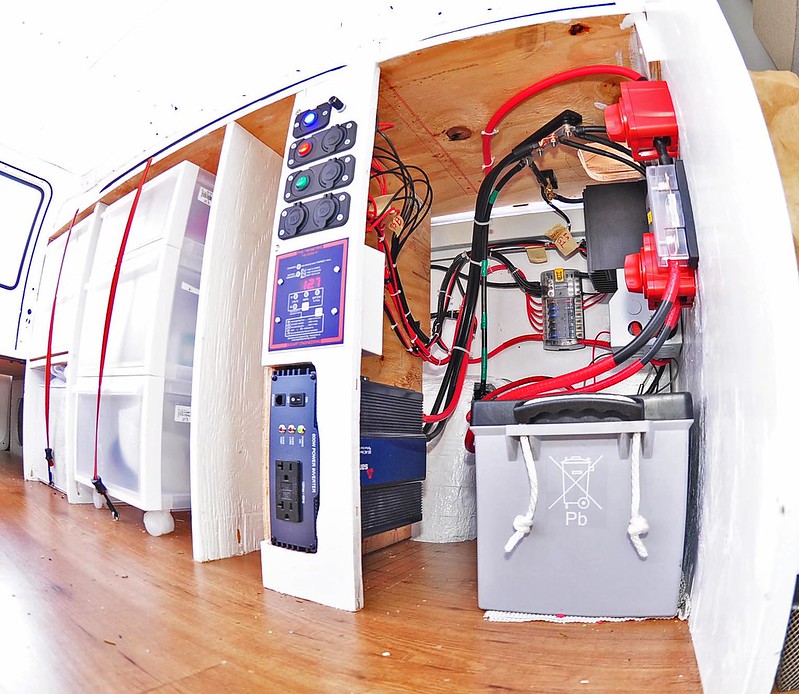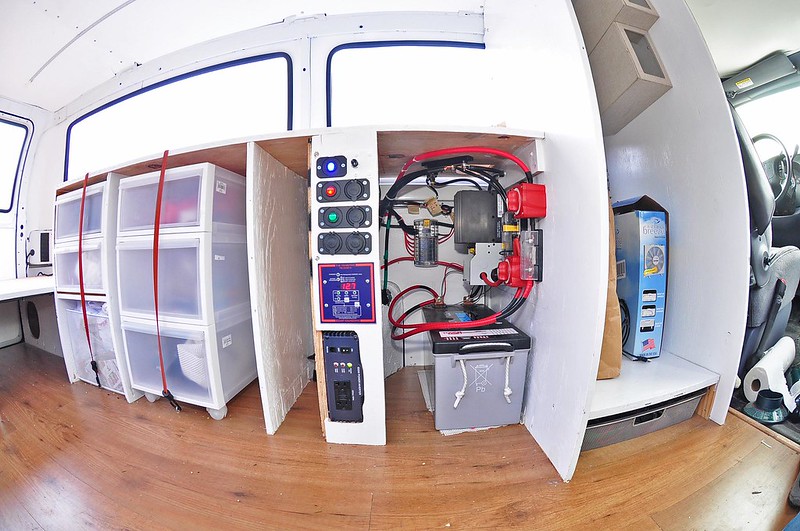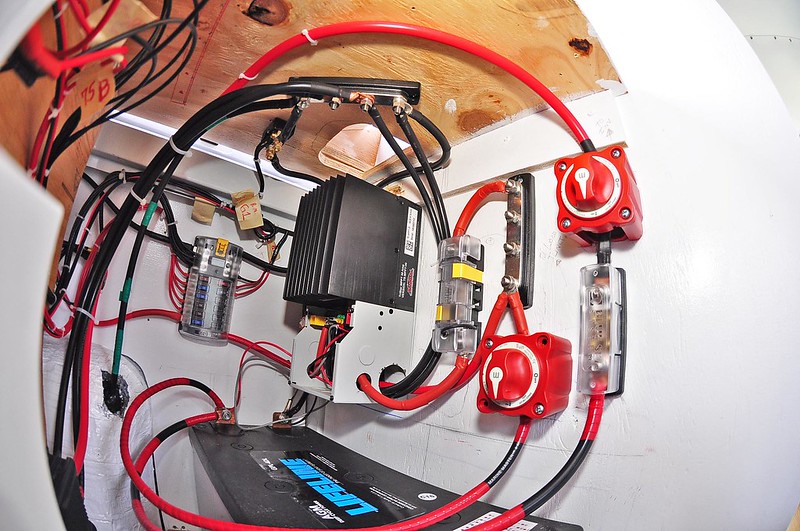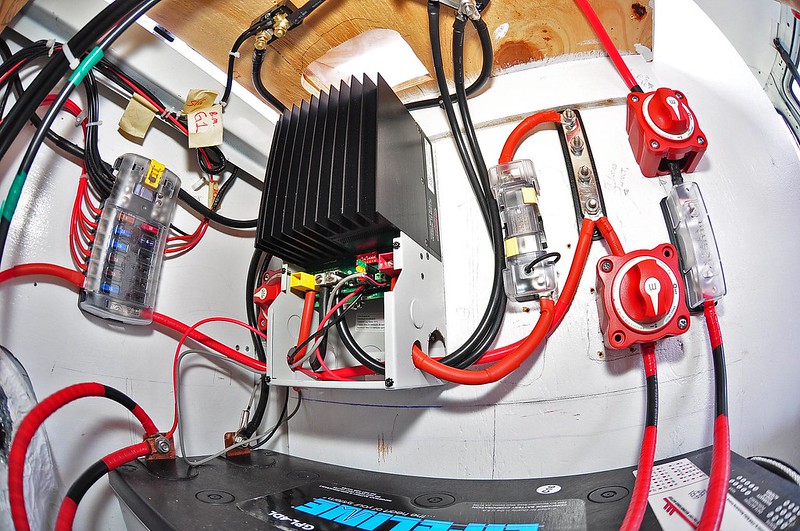SternWake
Well-known member
- Joined
- Nov 30, 2013
- Messages
- 3,874
- Reaction score
- 2
Lifeline's float setting is 13.2 to 13.4, lower than other AGM's
If one charge controller option allowed one to choose 14.4v absorption and program it to hold until amps taper to 0.5% of capacity, but then had to deal with too high a float voltage, I'd deal with too high a float voltage.
But if the Van sits for a week and the battery is not cycled, then a 13.6 or .8v is too high.
Finding the happy medium in charge profile settings really depends on how you use the battery. Days at float voltage, without a deep cycle, then The float voltage is much more important. Day after day of cycling to 80% charged or less and the Absorption voltage and its duration are much more important, and the battery might not even get to spend any time at the too high Unideal float voltage.
If the charge controller will not allow one to hold ABSVoltage for the time needed for amps to taper to 0.5% of capacity, then the higher than recommended float voltage is beneficial as it will allow the last few % to fill the battery faster than a lower 13.2 to 13.4v. AGMS are nice in this regard. A flooded battery really needs the higher voltage to top charge the battery in the minimum time. the lower voltage will take days, but the AGM battery accepts more current at the premature float voltage.
Often when I use my manual adjustable voltage power supply, and can not be there when amps taper to 0.5% of capacity at 14.46v( Northstar AGM), I lower the voltage to 13.8v, and walk away. While the amps might have tapered to 9 at 14.46 at that point, lowering the voltage to 13.8 still allows 7.8 amps to flow.
If this was a flooded/wet battery that needed 9 amps to be held at 14.4, lowering the voltage to 13.8 the amps would drop to 2 or 3 and time to full would be much longer.
One other thing to consider, which does not sound likely, is low float voltages, like 13.2v held while there is still a load on the battery, can actually allow the battery to discharge slightly. I noticed this on my previous group31 flooded battery, that after hours at 13.06v float as specified by USbattery, if I bumped up voltage to the 14.9v this battery needed more amperage than it should of to get there and be held there, indicating the battery was being slightly discharged at this low float voltage, and the Hydrometer later confirmed it. When I bumped float voltage up a bit higher this did not occur. So while a battery should not be able to discharge when held at a voltage slightly higher than its fully charged resting voltage, in theory, my observations have shown otherwise when there are still loads on the battery, but the solar or other charging source holds it at float voltage.
I would not like the laptop factor in changing of the CC settings. My Bluesky 2512i with ipn pro remote has kind of a clunky interface, but i can push a series of buttons and choose absorption voltage and duration and threshold, and float voltage.
The Shunt you broke, was it the Deltec 500 amp 50MV shunt? These are pretty burly, and one can get a bigger wrench on the flats to hold it while tightening the brass bolt.
The Lifeline has so little self discharge, that if one is not cycling the battery at all, and one cannot set their solar controller profile to Lifeline's 'ideal' float voltage, then once the battery is full, flip the switch on the charge controller turning it off, turn off all parasitic loads and let it sit uncharged.
As far as the ECM goes, having to resolder the pins inside due to the weight of the wires fracturing the solder joints is the only difficult part. On a functioning ECM/PCM, Cleaning out the contacts of the old crusty dielectric grease, and then letting the DeoXit clean the electrical contacts within, will only promote a better running more efficient engine. Taking the weight of the wires off the ECM so it cannot fracture the solder joints is simply preventative maintenance. ECM/PCM replacement is stressful as when the symptoms begin it can mean random stalling and no restart, and one can wind up chasing the wrong clues and throwing parts at it, and random stalling is simply dangerous.
It does not help that chrysler in their ultimate wisdom, mounted the PCM in the hottest part of the engine bay, but I'll guess most of their failures are from poor connectors in combination with the weight of the wire bundles, hot and cold cycles, stressing the solder/pin connections on the circuit board.
Also the location, can allow rainwater to run under the hood, and along the firewall where the ECM is mounted. It could then run down a wire right into the connector, bridging contacts which should not be bridged.
Diverting rainwater so it cannot hug the firewall is wise, something chrysler decided cost too much money apparently.
If one charge controller option allowed one to choose 14.4v absorption and program it to hold until amps taper to 0.5% of capacity, but then had to deal with too high a float voltage, I'd deal with too high a float voltage.
But if the Van sits for a week and the battery is not cycled, then a 13.6 or .8v is too high.
Finding the happy medium in charge profile settings really depends on how you use the battery. Days at float voltage, without a deep cycle, then The float voltage is much more important. Day after day of cycling to 80% charged or less and the Absorption voltage and its duration are much more important, and the battery might not even get to spend any time at the too high Unideal float voltage.
If the charge controller will not allow one to hold ABSVoltage for the time needed for amps to taper to 0.5% of capacity, then the higher than recommended float voltage is beneficial as it will allow the last few % to fill the battery faster than a lower 13.2 to 13.4v. AGMS are nice in this regard. A flooded battery really needs the higher voltage to top charge the battery in the minimum time. the lower voltage will take days, but the AGM battery accepts more current at the premature float voltage.
Often when I use my manual adjustable voltage power supply, and can not be there when amps taper to 0.5% of capacity at 14.46v( Northstar AGM), I lower the voltage to 13.8v, and walk away. While the amps might have tapered to 9 at 14.46 at that point, lowering the voltage to 13.8 still allows 7.8 amps to flow.
If this was a flooded/wet battery that needed 9 amps to be held at 14.4, lowering the voltage to 13.8 the amps would drop to 2 or 3 and time to full would be much longer.
One other thing to consider, which does not sound likely, is low float voltages, like 13.2v held while there is still a load on the battery, can actually allow the battery to discharge slightly. I noticed this on my previous group31 flooded battery, that after hours at 13.06v float as specified by USbattery, if I bumped up voltage to the 14.9v this battery needed more amperage than it should of to get there and be held there, indicating the battery was being slightly discharged at this low float voltage, and the Hydrometer later confirmed it. When I bumped float voltage up a bit higher this did not occur. So while a battery should not be able to discharge when held at a voltage slightly higher than its fully charged resting voltage, in theory, my observations have shown otherwise when there are still loads on the battery, but the solar or other charging source holds it at float voltage.
I would not like the laptop factor in changing of the CC settings. My Bluesky 2512i with ipn pro remote has kind of a clunky interface, but i can push a series of buttons and choose absorption voltage and duration and threshold, and float voltage.
The Shunt you broke, was it the Deltec 500 amp 50MV shunt? These are pretty burly, and one can get a bigger wrench on the flats to hold it while tightening the brass bolt.
The Lifeline has so little self discharge, that if one is not cycling the battery at all, and one cannot set their solar controller profile to Lifeline's 'ideal' float voltage, then once the battery is full, flip the switch on the charge controller turning it off, turn off all parasitic loads and let it sit uncharged.
As far as the ECM goes, having to resolder the pins inside due to the weight of the wires fracturing the solder joints is the only difficult part. On a functioning ECM/PCM, Cleaning out the contacts of the old crusty dielectric grease, and then letting the DeoXit clean the electrical contacts within, will only promote a better running more efficient engine. Taking the weight of the wires off the ECM so it cannot fracture the solder joints is simply preventative maintenance. ECM/PCM replacement is stressful as when the symptoms begin it can mean random stalling and no restart, and one can wind up chasing the wrong clues and throwing parts at it, and random stalling is simply dangerous.
It does not help that chrysler in their ultimate wisdom, mounted the PCM in the hottest part of the engine bay, but I'll guess most of their failures are from poor connectors in combination with the weight of the wire bundles, hot and cold cycles, stressing the solder/pin connections on the circuit board.
Also the location, can allow rainwater to run under the hood, and along the firewall where the ECM is mounted. It could then run down a wire right into the connector, bridging contacts which should not be bridged.
Diverting rainwater so it cannot hug the firewall is wise, something chrysler decided cost too much money apparently.




























































